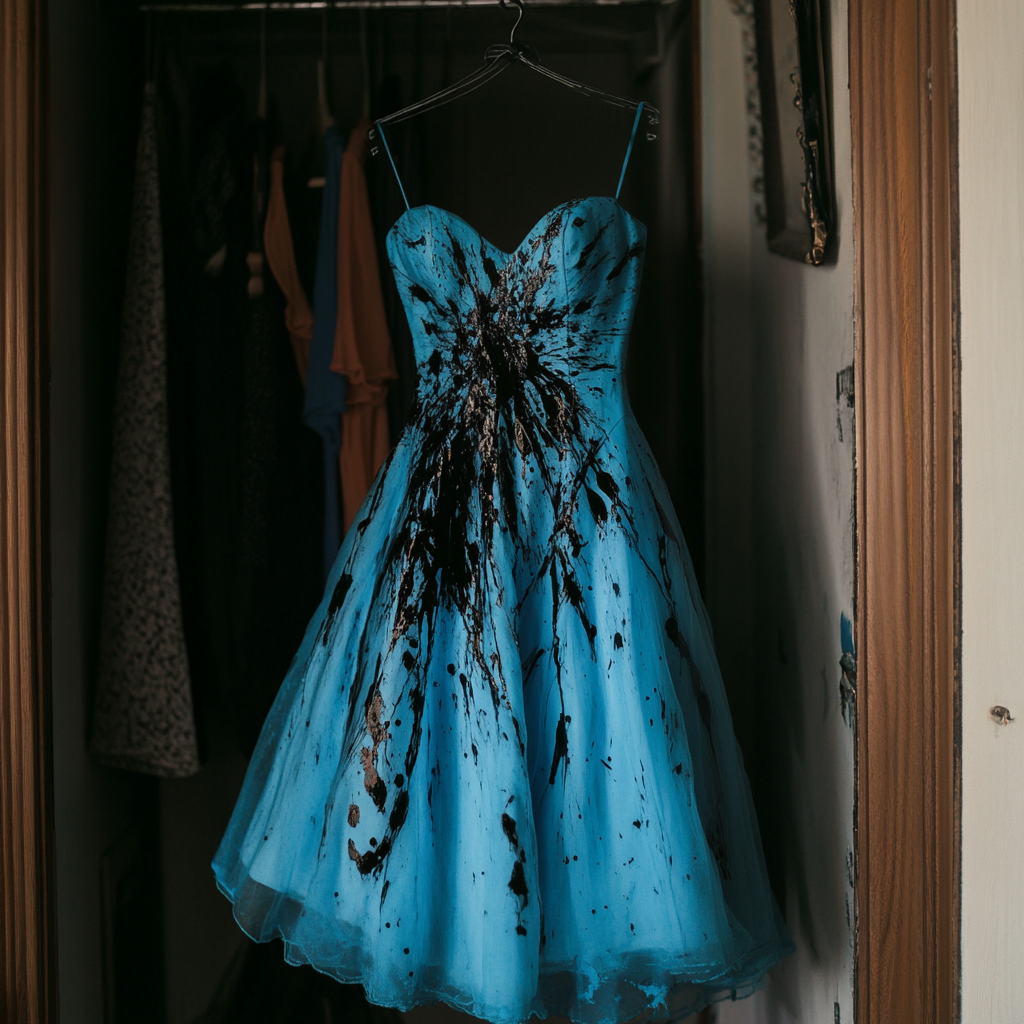
On a warm Friday in April 2001, 17-year-old Tamara Fields left Greyidge High School early, her heart full of anticipation. It was prom night in Greyidge, Georgia—a sleepy Southern town where spring meant borrowed limousines, corsages, and dreams stitched into silk. Tamara had made her own dress: sky blue, sleeveless, carefully hemmed by hand. She told her homeroom teacher, “I can’t be late tonight.” But she never came home.
By sunset, her mother, Lorraine Fields, was pacing the living room, a roast warming in the oven and a disposable camera ready for pictures that would never be taken. Tamara never called. By 8:30 p.m., Lorraine was knocking on neighbors’ doors; by 10:15, she was at the Greyidge Police Department, trembling as she reported her daughter missing. The response was chillingly casual: “She’s 17, ma’am. Sometimes girls just need a night away.” There was no Amber Alert, no press release, and no sense of urgency. Tamara’s disappearance was quietly labeled a runaway.
For two decades, the Fields family lived with silence. Lorraine kept Tamara’s room untouched, the half-finished dress pattern still hanging in the closet. The town moved on; businesses closed, schools merged, and the Glenrose Motel—a crumbling relic on the town’s edge—fell into disrepair. It was there, in the summer of 2021, that Tamara’s story reemerged in the most haunting way.
A Dress in the Wall
The Glenrose Motel had been abandoned for years, slated for demolition as part of a redevelopment project led by Councilman Reggie Clay, a former substitute teacher at the high school. As the bulldozers tore down the building, Curtis Dayne, a janitor hired to clean the site, found something wedged inside a wall in Room 6: a sky-blue prom dress, torn and dust-stained, with a hand-sewn label reading “T Fields.” Police arrived within hours. The news spread like wildfire.
>
Lorraine Fields received the call she had always feared. When she saw her daughter’s dress on TV, sealed in an evidence bag, her knees gave out. “That’s her dress,” she whispered. “That’s my baby’s dress.” The discovery reignited a cold case that had languished in obscurity for 20 years.

Old Wounds, New Questions
I returned to Greyidge as a reporter, but also as Tamara’s former classmate. The town was buzzing with rumors and regret. Why had Tamara’s case been dismissed so quickly? Why was there no Amber Alert? A junior detective in the newly formed cold case unit asked the same questions. “It wasn’t national yet,” a senior officer explained. “And she was 17. But she was Black. You know how that went back then.”
Inside Tamara’s recovered purse, investigators found a casting call flyer: “Models Wanted. Atlanta Style Showcase. One Day Only. April 28, 2001. Glenrose Motel.” The flyer had never been reported. Digging through old police logs, I found a 2001 call from a motel guest who’d heard “strange sounds” from Room 6—the same room where the dress was found. The responding officer wrote, “Room 6 unoccupied. Caller likely mistaken or intoxicated.” The lead was never followed up.
A Pattern of Disappearances
With help from a retired FBI analyst, Gerald Knox, I uncovered a disturbing pattern: between 1998 and 2004, at least 17 Black girls aged 14–19 disappeared across the South, all labeled as runaways, all last seen near motels or bus stops. Only two were ever found. Tamara’s case fit the pattern exactly.
>
The Glenrose Motel’s maintenance logs showed Room 6 had been resealed in 2004, three years after Tamara vanished. Police now believe someone returned to hide evidence—or perhaps to move a body. Forensics found no blood or DNA, only scratches inside the wall cavity, likely made by a tool.
The Suspects
Attention turned to two men: Curtis Dayne, the janitor who discovered the dress, and Reggie Clay, the councilman who’d pushed for the motel’s demolition. Curtis, it turned out, had worked at motels and bus stations across the Deep South, never staying long. When police tried to question him, he vanished. Inside his trailer, investigators found Tamara’s missing student ID and a shoebox of small items: a bracelet, a hair clip, a ring engraved “Ayana”—the name of another missing girl. A notebook listed 17 motel names and sets of initials, matching the timeline of the disappearances.
Meanwhile, Clay denied any connection to Tamara’s case, but his personnel file from Greyidge High included a dismissed complaint: “Inappropriate comment. Tamara F.” He had also worked as a substitute in towns where other girls disappeared. There was no criminal record, no charges, just a trail of whispers and missed opportunities.
No Closure, Only Truth
Despite renewed attention, there was no breakthrough. The district attorney refused to move forward without a body. Curtis Dayne remained missing, his truck abandoned in the woods. Clay resigned from the city council, citing health reasons. Lorraine’s health deteriorated under the weight of renewed grief.
>
But Tamara was no longer invisible. Her story went viral, shared by news outlets and true crime podcasts nationwide. For a brief moment, she was not just a name in a file—she was a daughter, a seamstress, a girl who never got to dance at her prom.
In the end, there was no justice, no closure—just the truth that for too long, the disappearances of Black girls like Tamara Fields were ignored, dismissed, or forgotten. “Justice doesn’t disappear,” I wrote in my final article. “It gets ignored. Sometimes, it wears a blue dress no one saw until it was already too late.”
As the Glenrose Motel was finally demolished, Lorraine Fields watched from across the street, holding Tamara’s prom shoes in her lap. The lot will become a pharmacy, the town says—a place for healing. But for Lorraine, and for all the families who wait for answers, the wound remains.
Tamara Fields never made it to prom, but now the world knows her name. She mattered. She always did.
